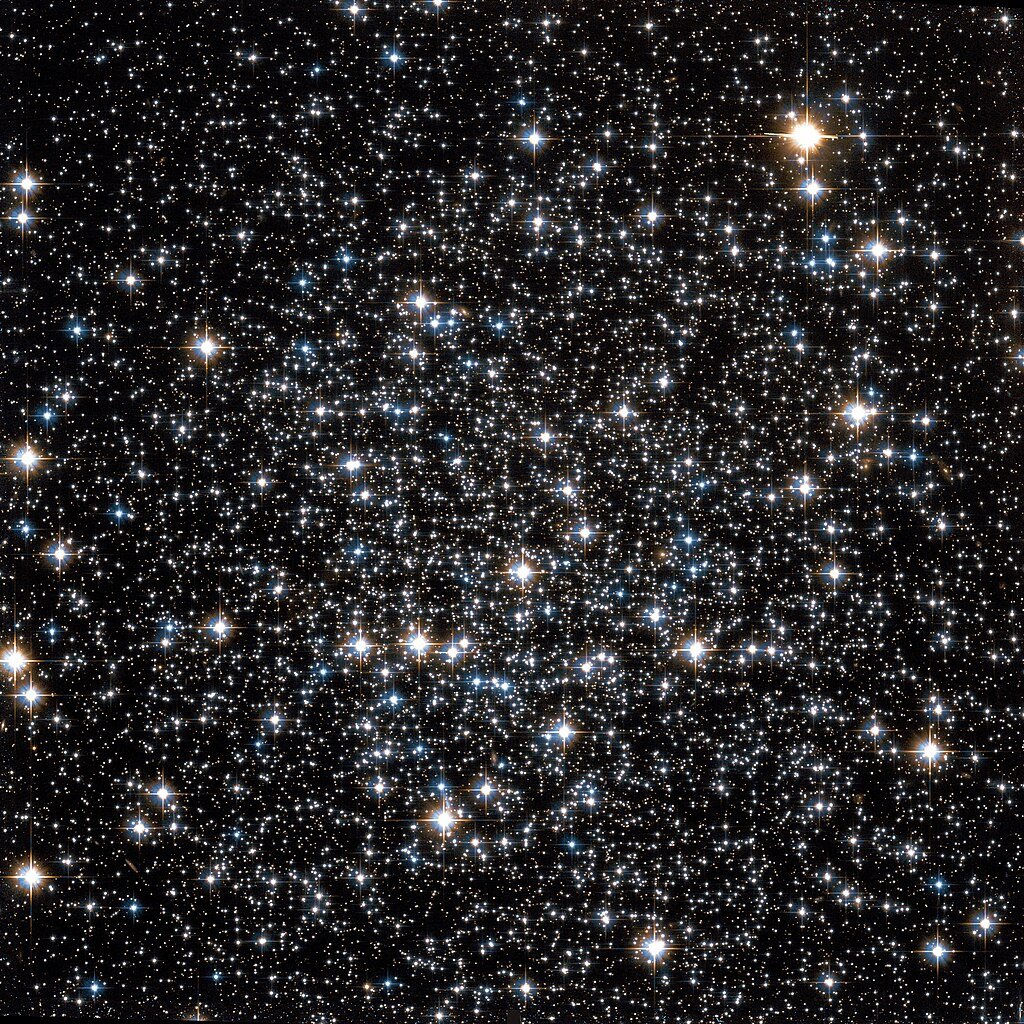
Unraveling the Mystery of the Faintest Galaxies: A Deep Dive into Sagittarius II and Aquarius II
Astronomers used the Gemini/GHOST spectrograph to study Sagittarius II (Sgr2) and Aquarius II (Aqu2), two faint Milky Way satellites. Their analysis suggests Aqu2 is a dark matter-dominated ultra-faint dwarf galaxy, while Sgr2 remains ambiguous, possibly a star cluster. Chemical signatures and star movements were key to these classifications. The study highlights the difficulty in distinguishing faint galaxies from clusters and the need for further observations and simulations.

Unearthing Ancient Stars: The Discovery of Two Metal-Poor R-Process Enriched Stars
Astronomers discovered two ancient metal-poor stars enriched in r-process elements, shedding light on the origins of heavy elements. BPS CS 29529-0089, an r-II star, likely formed in the Milky Way’s proto-disk, while TYC 9219-2422-1, an r-I star, originated in the Gaia-Sausage-Enceladus merger. Their chemical signatures suggest enrichment by neutron star mergers and possibly a single Population III supernova, challenging existing theories on galactic evolution.

NGC 288: The First "Splashed" Globular Cluster?
NGC 288 appears to be the first known "Splashed" globular cluster—originally formed in the Milky Way but later thrown into a new orbit by the Gaia-Sausage-Enceladus (GSE) merger. Despite its accreted-like motion, its age and chemical composition match in situ clusters, suggesting it was born in the Milky Way. This study highlights how ancient galaxy mergers reshaped the Milky Way's structure, potentially affecting other globular clusters in similar ways.

New Horizons and the Hunt for a Flyby Target
The proposed Roman Space Telescope survey aims to discover and study hundreds of Kuiper Belt Objects (KBOs), providing insights into their formation, cratering history, and binary nature. It may also identify a flyby target for NASA’s New Horizons spacecraft before it leaves the Kuiper Belt. This project will explore previously uncharted regions, testing theories of planetary evolution while also contributing to exoplanet and galactic studies.

Unlocking the Secrets of the Stellar Halo: Dynamical Streams and the Galactic Bar
This study explores moving groups of stars in the Milky Way’s halo, revealing two streams influenced by the galaxy’s central bar. Using Gaia data and simulations, the authors show that these streams result from resonances with the bar’s rotation. By analyzing their motion, they estimate the Milky Way’s mass and bar pattern speed, refining our understanding of the galaxy’s structure and dynamics. Their findings highlight the role of resonances in shaping stellar motions.

Moon Mysteries: How Did Saturn’s Diverse Moon Family Come to Be?
Saturn’s fascinating family of moons showcases incredible diversity, from tiny "ring-moons" nestled within icy rings to Titan, its massive moon with a dense atmosphere. Blanc and colleagues explore theories of their formation, favoring a scenario where Saturn’s rings once extended far beyond their current limits, gradually spreading outwards and forming moons at their edges. Titan's unique characteristics, however, suggest a more complex formation history.

Gaia: A Decade of Mapping the Stars
The Gaia mission has mapped the Milky Way for over a decade, measuring the positions, motions, and properties of billions of stars. Upcoming data releases (DR4 and DR5) will improve precision, expand classifications, and provide time-series data for studying exoplanets and binary stars. The GaiaUnlimited project addresses observational biases, ensuring accurate interpretations. Looking ahead, GaiaNIR could extend these efforts in infrared, revealing hidden regions of the galaxy. Though Gaia's observations have ended, its impact will shape astronomy for years to come.

Peculiar Rainbows in Saturn’s E Ring: Unraveling Luminous Stripes Near Enceladus
Scientists analyzing Cassini data discovered mysterious luminous stripes in Saturn’s E ring near Enceladus, resembling a natural diffraction pattern. These stripes, seen in multiple flybys, suggest an organized ice structure acting as a reflection grating. The bright band, made of crystalline ice with traces of CO₂, likely consists of fresh plume material. This finding hints at unexpected patterns in Saturn’s rings, potentially influenced by Enceladus’ plumes and magnetic interactions.

A Super-Puffed Giant: WASP-193b’s Surprisingly Low Density and Well-Aligned Orbit
WASP-193b is an extremely low-density super-puff planet, with a size similar to Jupiter but a mass closer to Neptune. Unlike other super-puffs with tilted orbits, it follows a well-aligned path around its star. Researchers used the Magellan Clay Telescope to refine its properties and confirm its unusual density. Future studies, including those with JWST, may reveal whether WASP-193b is actively losing mass, shedding light on how such planets form and evolve.

Exploring the Kinematics of Omega Centauri’s Metallicity Populations
Vernekar et al. (2025) investigate the motions of different metallicity populations in Omega Centauri using Gaia and Hubble data. They find no significant differences in movement between metal-rich and metal-poor stars, suggesting that all populations are well-mixed. The study also confirms that Omega Cen rotates uniformly. These findings challenge the idea that metal-rich stars were accreted and instead support a self-enrichment scenario for the cluster’s formation.

Unraveling the Mystery of CKR02A: A Runaway Star or a Colliding Wind Region?
CKR02A, a compact radio source in NGC 6334A, may be a colliding wind region (CWR) of two massive stars or the bow shock of a runaway star. VLA observations show its arc-shaped structure and non-thermal emission. While a CWR requires unseen massive stars, the runaway scenario aligns with CKR02A's motion. Both explanations have challenges, and further studies are needed to determine its true nature.

Predicting Small Planet Hosts: Machine Learning’s Role in Exoplanet Discovery
Torres-Quijano et al. used machine learning to predict which stars are likely to host small planets based on their chemical composition. Their model identified sodium (Na) and vanadium (V) as key indicators, outperforming iron (Fe). The study validated its predictions and suggested that future exoplanet searches, including NASA missions, could use these findings to improve planet detection efficiency. This research advances our understanding of planetary formation and the star-planet connection.

A Chemical Census of the Milky Way’s Nuclear Star Cluster
The study analyzes the chemical composition of nine stars in the Milky Way’s Nuclear Star Cluster (NSC) using infrared spectroscopy. Most elements match the inner bulge, suggesting a shared history, but sodium levels are unexpectedly high, hinting at a unique enrichment process. This research provides crucial insights into the NSC’s evolution and its connection to the Milky Way’s central regions.

Unveiling Exoplanet Surfaces: Lessons from Jupiter and Enceladus’ Opposition Effect
The study investigates the opposition effect—a brightening seen when planets and moons are directly opposite the Sun—on Jupiter and Enceladus using Cassini data. The results show that Jupiter's peak is broader due to coherent backscattering (CB), while Enceladus exhibits both CB and shadow hiding (SH). This suggests that opposition peak width could indicate whether an exoplanet has a solid or gaseous surface, but current telescopes lack the precision to detect this effect on distant planets.

TOI-512b: A Super-Earth Around a K-type Star
Rodrigues et al. confirm TOI-512b, a super-Earth orbiting a K-type star, using TESS and ESPRESSO. The planet has a radius of 1.54 Earth radii and a mass of 3.57 Earth masses, suggesting a rocky composition with a small core and minimal atmosphere. A second candidate planet was ruled out. While TOI-512b is not ideal for current atmospheric studies, it remains a valuable target for future exoplanet research.

How Do Bars Affect the Evolution of Disc Galaxies?
Bars in disc galaxies help stabilize their evolution by reducing their dependence on environmental factors. Unbarred galaxies show strong environmental effects on star formation, color, and metallicity, while barred galaxies exhibit weaker variations. Bars likely regulate internal processes, such as gas movement and star formation, making them crucial in galaxy evolution. This study underscores the importance of bars in shaping galactic properties, using data from the MaNGA survey.

A New Look at the Earliest Stars: Understanding Population III Spectra
This study refines models of Population III (Pop III) stars, the first stars in the universe, using the GALSEVN framework. It confirms that strong helium emission can help identify Pop III stars but only within their first million years. The study also explores their role in cosmic reionization and predicts their impact on gravitational waves from binary black hole mergers. Future telescopes and detectors may soon provide evidence of these ancient stars.

The Titanium Chemistry of WASP-121 b: A High-Precision Look at an Ultrahot Jupiter
Researchers used high-resolution spectroscopy with ESPRESSO to study the atmosphere of WASP-121 b, detecting Ti I at high significance but no TiO. Titanium appears concentrated in the planet’s equatorial jet, challenging existing models. These findings highlight complex atmospheric chemistry and the need for further observations with JWST and ELT.

A Mission to Meet Halley’s Comet in 2061
The HCREM (Halley Comet Rendezvous Mission) aims to reach Halley’s Comet by 2056, using Jupiter’s gravity assist and electric propulsion to study its activity long before it nears the Sun. Unlike past flybys, this mission would travel alongside Halley for years, capturing detailed data with an innovative wide-angle camera. Scientists hope to uncover key insights into the comet’s structure, evolution, and volatile release. A launch before 2040 is crucial to meet the timeline and maximize scientific returns.

Unraveling the Binarity of B-type Supergiants in the Small Magellanic Cloud
A new study by Britavskiy et al. examines the binary nature of early B-type supergiants (BSGs) in the Small Magellanic Cloud using data from the Binarity at LOw Metallicity (BLOeM) survey. Analyzing 262 stars, the team found that about 40% are likely binaries, with a sharp drop in binarity for stars cooler than 18,000 K. The findings suggest that mergers play a key role in BSG evolution, and that binary fractions remain consistent across different metallicity environments. Future observations will further clarify how these massive stars evolve.
